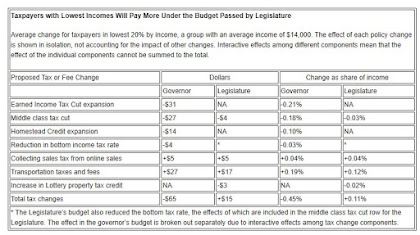To start with, remember how Paul Ryan and company claimed one of the good things about the tax
But complaints about the changes came quickly: the National Association of Tax Professionals told the IRS in a July 2018 comment letter that it received “overwhelmingly unfavorable” feedback from hundreds of members.
“Treasury Secretary Steven Mnuchin told the media that the administration’s main objective was to simplify the forms,” the association said. “In our opinion, making the form smaller and removing lines only to move them to other schedules does not equate to simplification.”
Scattering information that used to fit on two pages across multiple different attachments required taxpayers and their advisers to toggle back-and-forth and made everything much more confusing, Ellis said.
The IRS heard the concerns and is redesigning the 1040 that people will use to file their 2019 tax returns next year. The agency July 11 unveiled a draft form that looks closer to the Form 1040 that existed prior to 2018 with a two-page baseline form and three schedules, as opposed to six.
In addition, part of the GOP's “simplifying” of the tax code was why so many middle-class and upper-middle class people ended up having to send checks to the IRS last Spring, because the standard deduction was raised so high that it became pointless to take deductions for mortgage interest and state and local (SALT) taxes.
And no surprise, but we found out on Monday that our “fiscally conservative” White House is going to borrow a whole lot of money in the next couple of months.
The Treasury Department said Monday it expects to borrow $433 billion in the current July-September quarter. That would be the largest quarterly borrowing total since early 2018, as the government replenishes its cash reserves following the expected resolution over raising the debt limit.That last number is not to be confused with the budget deficit, as this reflects the total amount borrowed to pay bills at any point in the year. Other times the government has more money coming in than going out, so the net deficit for the year will be a bit lower - estimated to be around $900 billion - $1 trillion for FY 2019, which ends on Sept. 30.
Treasury said the $433 billion in borrowing it expects this quarter, through selling Treasury bonds and bills to the public, would be the largest quarterly total since it borrowed $488 billion in the January-March quarter of 2018.
Market borrowing for this budget year is projected to total $1.27 trillion, a 6.5% increase from the $1.195 trillion borrowed in the 2018 budget year.
The other explanation for this extra borrowing is that the debt ceiling deal gives the Trump Treasury Department extra flexibility to pay bills and keep more cash around, now that their credit line has been raised.
The Democratic-controlled House last week approved a bipartisan debt and budget deal that the Senate is expected to pass this week. That measure suspends the current $22 trillion debt ceiling for two years until July 31, 2021….However, that budget deal doesn’t say how much each department gets in funding, nor does it deal with any tax changes for the 2020 Fiscal Year. That still has to be figured out over the next 2 months. And that's a place where Dems could put their foot down, if they choose to.
Treasury had initially estimated it would need to borrow $160 billion this July-September quarter but that was before House Democrats struck a budget and debt deal last week with the Trump administration, ahead of a fall deadline for action.
After all, when 40% of the nation’s GDP growth is due to government spending (as it was in Q2 2019), it would be a damn shame if that spending didn’t continue and the economy declined as a result. Which is exactly why House and Senate Dems should do their parts to hold up anyone getting anything until something is done about the (in)actions of Trump and Moscow Mitch McConnell on the country’s national security and related corruption.
I’m sure Trump and 22 GOP Senators wouldn't want to face 2020 voters with a slowing and/or recessing economy. So if Republicans continue to cheat and flout the law to avoid accountability, then Dems should be willing to shut things down at the end of September, and throw our already-bubbly stock market into a panic. The prospect of that economic damage, and the added attention to GOP corruption that such a move would draw would probably make the GOP more likely to go along if the Dems made a simple offer of “play by the law and secure our elections, and you get a budget deal.”
The growing deficits and debt offer a political opportunity. So PLAY HARDBALL, DEMS! Unless you’re not in this to win it.

























